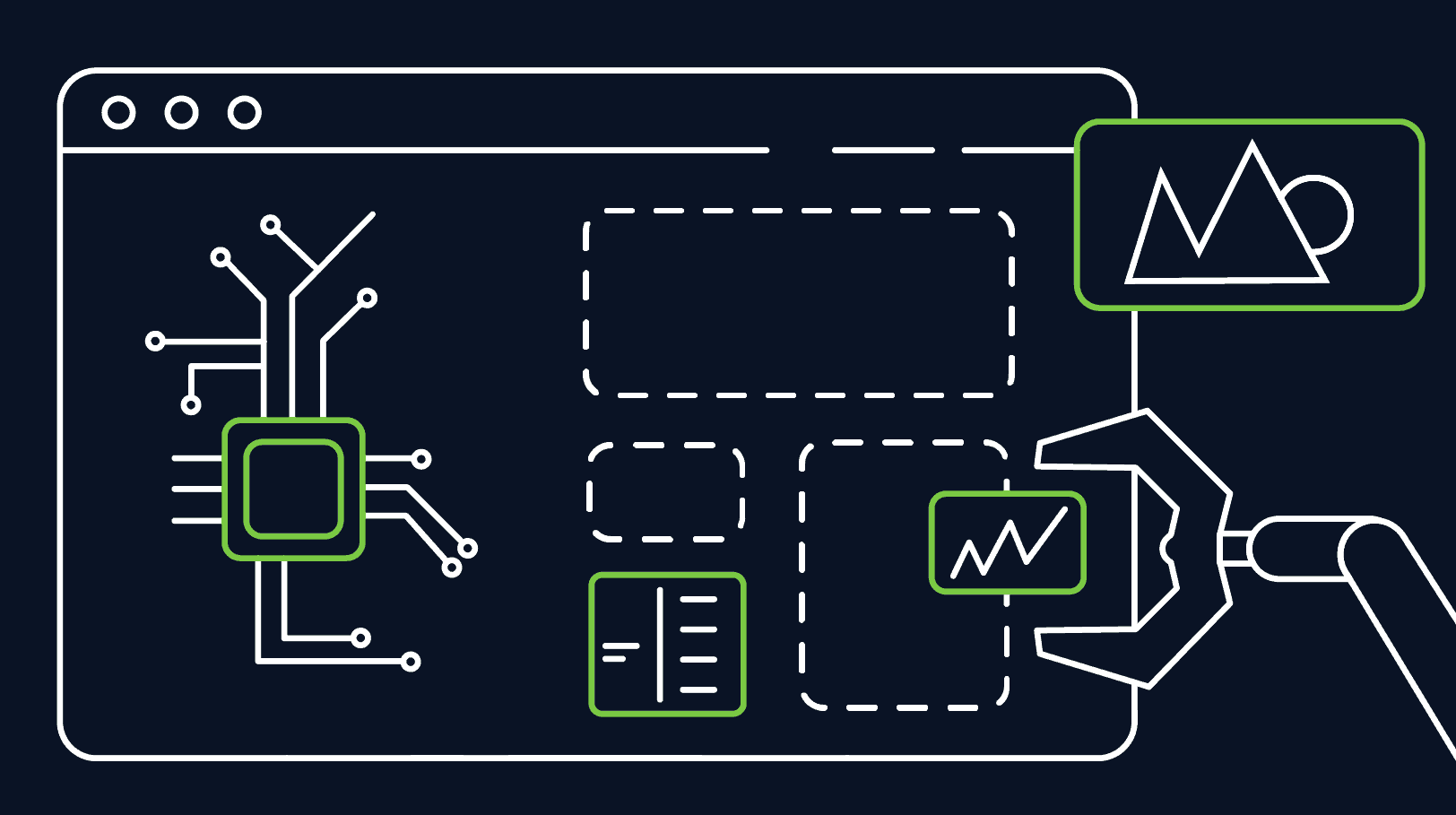5 Must-Haves for Business Process Automation Software

Curious about business process automation software? Debating robotic process automation (RPA) vs business process management software (BPMS) and wondering where low-code fits in? This blog post has got you covered. Read on to learn about the top five features of business process automation software.
RPA vs. BPMS vs. low-code
When it comes to selecting the right process automation software, you need to think of the end goal. Are you looking at robotic process automation (RPA) for task automation? Perhaps business process management software (BPMS) for process orchestration? Or are you looking for something a little more? Something that manages business processes end-to-end, like a low-code development platform?
Huh? Right now, you’re probably hearing that old Sesame Street song playing in your head, “One of these things is not like the others.” On the surface, low-code seems an unlikely candidate for digitizing and automating business processes.
But to create truly powerful end-to-end business processes, you need to turn them into applications, and that’s where low-code comes in. You need to focus on the platform’s technical capabilities—cloud portability, integrations, model-driven development, multi-channel, and extensibility.
Let’s dive a little deeper into each system on a capability-by-capability basis to see why. Here are the top 5 must-haves for business process automation software:
1. Model-driven development
Model-driven development leverages graphical models and pre-built application components so that users can visually construct complex applications.
Model-driven development gives organizations a shared, ubiquitous language. With business processes, such a language is vital. It allows IT and process experts from the business side to visually express a shared understanding of the business process. This means understanding requirements and seeing those requirements built out is much easier on both parties. If those requirements aren’t being met, it’s easier for the process experts to see this and for developers to quickly iterate.
Make sure you partner with a platform like low-code that provides out-of-the-box functionality when it comes to supporting visual processes.

2. Cloud portability
Business process management succeeds when your applications are flexible. Think about it. No business process is ever stagnant. There are always modifications to be made, scenarios in which exceptions need to be made, or a growing user base that needs to be addressed. Because of this, operational flexibility, risk mitigation, and delivery acceleration are all crucial aspects of business process applications. This is why cloud portability is crucial.
When considering process automation software, consider platforms with cloud-native architecture, so that you can scale to any size without redesigning your business process applications, which is often what happens when you go with BPMS or RPA. Those systems aren’t cloud-native, which means you’re likely to be locked in with a certain cloud vendor. If your process automation is a success, you may want to scale or even productize your application, which may mean a change in a cloud provider. Being locked in will prevent you from doing that and realizing even more value from your application.

3. Data and core systems integrations
Business processes are only as good as the systems they connect. Systems like enterprise resource planning software or customer relationship management software have core data on which business processes often rely. As an example, think about an inventory management system that needs to include SAP’s warehouse management software, Salesforce, Excel or Google Sheets, logistics software, and physical devices like scanners. The more seamless the integrations, the cleaner the data, the better the business process, the better the user experience.
Connecting data, applications, APIs or devices across an organization can be difficult and time-consuming. Look for business process software that enables workflow integration easily. Such a platform would consume and expose REST APIs, SOAP web services, or OData. When it comes to data, you also want to be sure that you can easily pull data from your core systems to build your end-to-end processes. With low-code, it’s often easy to build your own connectors that allow you to connect to your core systems.

4. Multi-channel experiences
Not all processes take place solely on a desktop or within one location. As devices like tablets, phones, handhelds, and wearables proliferate, and context constantly shifts (from the warehouse, in the field, at the office, etc.), business processes need to now be multiexperience solutions. Building for multiexperiences often means building the same app multiple times for different channels.
When you choose low-code over RPA or BPMS, you ensure that multiexperience development is achievable for all your developers. Using a single skillset and one low-code platform, developers can build and deploy user experiences across many different touchpoints (e.g., web and mobile) that meet the needs of business users.

5. Extensibility
Markets change all the time. Which means needs change all the time. Which means demand, software, and deployment frequency change. Creating a business process is like building a castle on quicksand; it’s going to shift. To address this inevitability, you need to make your business process applications flexible, capable of change that matches business expectations. To that end, you need to address those changes quickly.
The set-up time for BPMS software is long. RPA maintenance can be tortuously slow. Partnering with a low-code development platform gives you the speed and flexibility you need via its extensibility—the ability to use reusable components that you’ve already built with other applications and integrate with other tools in your development suite to easily test and continuously integrate and deploy. This lets you maintain, iterate and release applications at the speed that the business needs them (which is usually really fast).

“Ok, I’m convinced of low-code, but which one?”
Glad you asked. When it comes to managing end-to-end business processes, low-code development is clearly the winner. Mendix stands above all other low-code players due to its built-in Workflow editor with which you can infuse applications with business process logic, and then scale them out to meet your needs.
